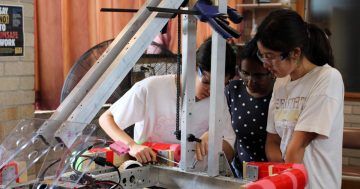Tammy Polk* says there are 6 ways SaaS tools can help retain employees and keep Gen Z happy.
 Gen Z grew up with tech in their hands and information at their fingertips.
Gen Z grew up with tech in their hands and information at their fingertips.
So the fact that the generation of 15-second TikTok videos and 280-character tweets doesn’t tolerate cumbersome, manual work processes should surprise no one.
Gen Z expects everything—work tasks included—to be advanced, accessible, and automated.
While some generations see this as doing the bare minimum, Gen Z believes they are working smarter, not harder.
Employers looking to attract and retain Gen Z employees must adopt their mantra.
After all, the vast majority (91 per cent) of Gen Zers say that an employer’s provided technology would be a factor in choosing between job offers.
Companies will continue to have challenges attracting and retaining top talent, given the general lack of digital maturity among most organizations.
Only 4 per cent of today’s organizations have achieved a fully digitized and automated workplace.
Most still depend on inefficient, redundant processes that keep young employees from pursuing fulfilling, impactful work.
It’s time to digitally grow up.
Stop doing tech like you’ve always done it
To retain your Gen Z talent, you must create a highly efficient workplace that streamlines processes, automates manual tasks, and relentlessly seeks efficiencies.
Here are the four pillars companies can leverage to stop the busy work and mature digitally:
Leverage it for learning
Inspire employees to think creatively and continue learning—inside and outside the office—by offering continuing education stipends and hosting internal upskilling sessions.
72 per cent of learning and development leaders say that providing these programs has become a more strategic function in their organization.
Whether $75 or $500, providing employees with a stipend will increase their interest and awareness around professional development courses.
Share recommended sources and programs with employees— but don’t limit them to topics related to their roles or professional skills.
All learning stimulates thinking.
Use it to create
Host “blue sky” brainstorming sessions and commend out-of-the-box thinking.
These methods can be helpful when team morale is low, or performance hasn’t been top-notch.
If employees feel free to think without limits, some of their ideas may not be feasible.
But that’s not wasted time! Without judgment, employees can surface truly novel ideas and help team members take impractical suggestions and mold them into refined, business-impacting processes.
Let the leaders lead
As a leader, model professional growth and adaptability.
Attend educational sessions internally and externally, show vulnerability when explaining organizational changes, and be transparent in your reasoning.
Tell your teams about the class you took—whether it was a data-driven communications seminar or a watercolour workshop.
And, if there’s a change in a team or organizational process, celebrate it.
Explain why change is good, even if it’s our instinct to fear it.
What does digital maturity look like in practice?
Retain your talented employees by giving them what they want: digital everything.
Audit your processes
Use data to root out inefficiencies that bog down teams with unwanted and unnecessary paperwork.
You’ll likely discover opportunities for increased efficiency, effectiveness, or both.
However, without an auditing process in place, it’s a risky guessing game.
Eliminate the clutter
Get rid of all paper-based forms and documents, and stop requiring wet signatures (printing out a piece of paper and signing it with a pen).
Instead, use technology platforms to turn these inefficient, manual processes into user-friendly, automated, and digitized ones.
Most of the time, this change requires a mindset shift—start there and gain employee and leadership trust before implementation.
Give them work that matters
Put your Gen Z employees—well, every employee—to work on more compelling initiatives that interest them and add value to your business.
Initiate conversations with employees that allow them to be honest about their work, what they’re passionate about, and how they’d change their workload.
This can be done through monthly 1:1 conversations, surveys, or self-evaluation.
*Tammy Polk is chief human resources officer at Formstack, the SaaS-based workflow platform helping organizations streamline data collection and management without coding.
This article first appeared at qz.com










